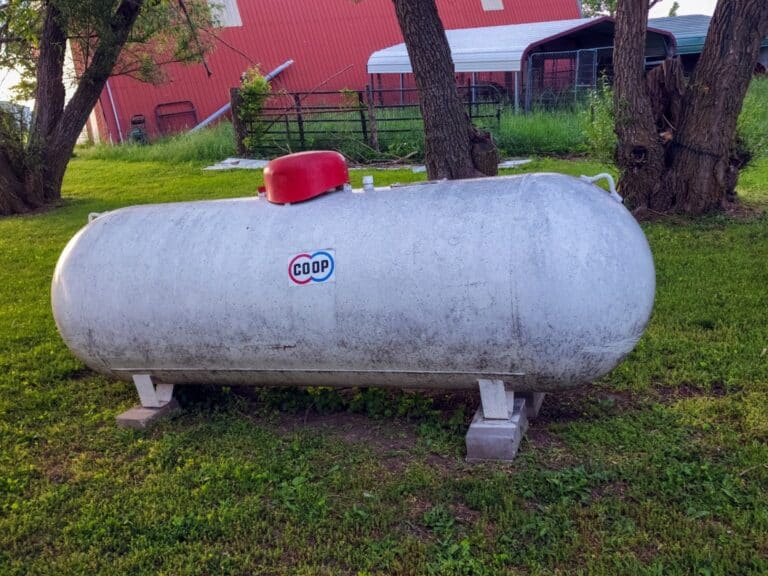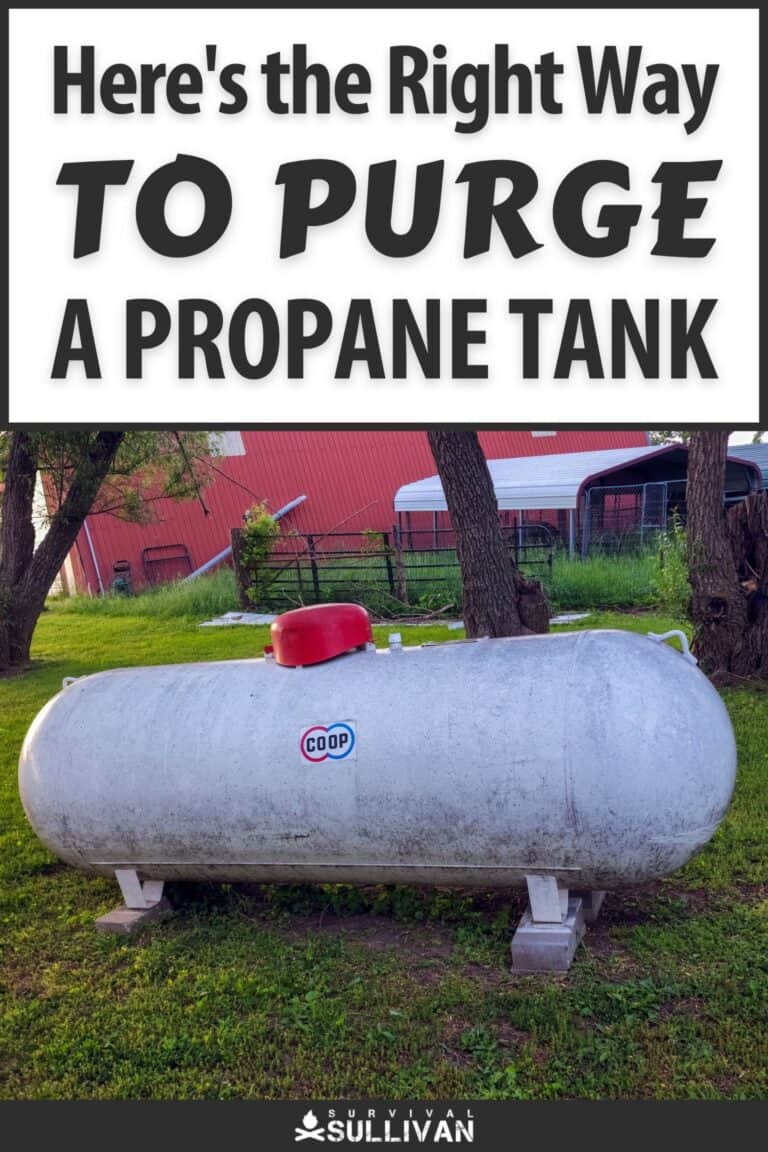If you’re like most people, you probably don’t think too much about your propane tank until it’s time to drag your grill out in to the backyard for a little cookout.

But if you use one to power your home, RV, tools, or generator, or you rely on propane for primary or backup heating, it’s important to know how to properly purge your tanks.
Purging a brand new tank is the only way to ensure your tank remains free of impurities that can impede function or cause the tank to degrade and fail. Neither outcome is good, and either can be dangerous!
Luckily, purging is easily done with the right tools and knowledge of the procedure. We will tell you about both in this article.
What Does it Mean to Purge Your Propane Tank?
When you hear the term “purging a propane tank,” this simply means to cleanse the tank of any foreign particles or materials that might be present.
This is done by flushing out the tank with pure propane gas until only clean and uncontaminated propane gas remains inside.
Once this is done, the propane tank is ready to use normally for the future aside from periodic inspection and maintenance.
Why Should You Purge Your Tank?
Purging your propane tank is critical for proper function and longevity. When you first purchase an unfilled propane tank, it should be filled with high-pressure air.
This air can cause trouble if not purged, and even promote condensation inside the tank which can rust the tank, potentially rupturing it.
Even if your propane tank is brand-spanking new and has never held propane, it won’t be ready to fill right away. You’ll need to purge it first.
What are the Consequences of Not Purging?
Failing to purge your new tank prior to the filling can cause serious issues in function and shorten the service life of the tank. Air contamination will result in a sputtering flow of propane, or even cause it to stop entirely.
That will derail whatever activity requires the propane and might even result in damage to the device it fuels.
Condensation inside the tank, again likely when air contaminates the propane, will speed up the process of corrosion.
This will make your tank more likely to leak or even catastrophically rupture, both posing a serious safety hazard.
Purging a new, unfilled tank is a mandatory step in preparing it for use, no exceptions!
Does Every Tank of Propane Your Buy Need to Be Purged?
No. Pre-filled propane tanks should be purged prior to purchase. But these tanks command a premium over the price of fuel alone, and you can save a bundle over time by buying empty tanks and getting them filled by a propane supplier. But, as you have learned, if you buy an empty tank you’ll need to purge it.
Purging Your Tank, Step-by-Step
Purging your propane tank is a process that is easily done in a few minutes once you have the process down pat and, of course, have the right tools. This section will tell you everything you need to know.
Tools
- A full tank of propane; used for filling your new tank.
- Your new, empty tank.
- Purge kit; consists of a hose to connect the two tanks, a two-way purge valve, and a bleeder port.
That’s it. Now, time to do this. As always, do this is an outdoor space that is well ventilated, and far from any possible source of ignition.
Procedures
For clarity throughout these procedures, your new, empty tank will be referred to as “new tank” and the tank that has propane you’ll be drawing from will be referred to as the “donor tank”.
- Set up your donor tank and new tank so they are next to each other, with the hose connecting them.
- Set the purge valve on line to “purge.” It should be marked accordingly.
- Open the valve on your new tank all the way; turn counterclockwise.
- Open the bleed port. You should hear gas escaping the new cylinder. Wait until the noise of gas stops.
- Open the valve on the donor tank all the way; turn counterclockwise.
- Set purge valve to “charge.” It should be marked accordingly.
- Listen for the sound of gas flowing from one tank to the other. Wait for the noise of gas to stop.
- Once the sound of gas stops, simply repeat steps #2 through #7 four more times (you can leave the valves on the tanks open). This is the prescribed process for purging the vast majority of the contaminants from your new tank and is imperative so you can be sure none remain.
- Your tank is ready for filling!
Do You Really Need to Repeat the Purging Process Several Times?
Yes, and you must not skimp out on doing this properly! The process of purging your new propane tank is not complicated, but you must do it thoroughly and correctly to ensure your tank is ready for years of faithful, safe service.
What if You Don’t Want to Purge the Tank Yourself?
Purging your own propane tank is a cinch with the right equipment, but if the whole process just gives you the creeps, don’t worry- you can have it done for you.
Pretty much every propane supplier will be happy to do the job for you when you buy a new tank from them and get it filled.
This is a great option if you just don’t feel confident about doing it yourself, lack the purge kit or if time is of the essence.
Expect a small cost for the operation, somewhere in the $5 to $10 ballpark, depending on your location.
This is a service that is well worth the nominal fee to keep you and your family safe, your tank working, and most importantly prevent accidents.
So there you have it: everything you need to know about purging a new propane tank. It’s not difficult, but it is important!


Tom Marlowe practically grew up with a gun in his hand, and has held all kinds of jobs in the gun industry: range safety, sales, instruction and consulting, Tom has the experience to help civilian shooters figure out what will work best for them.
